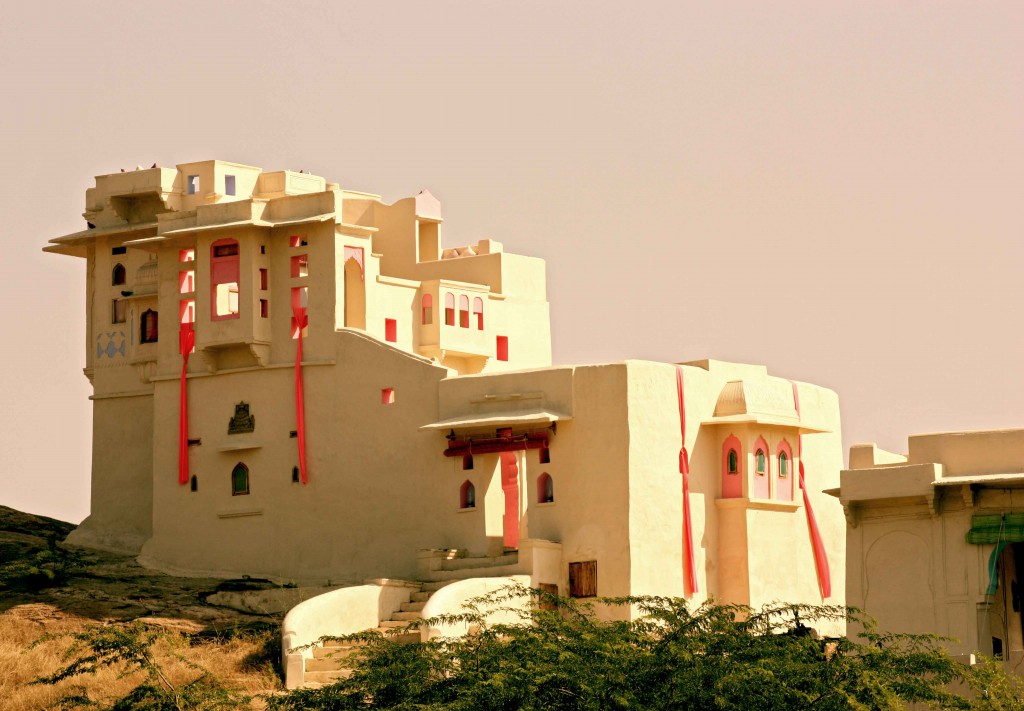
The Lakshmansagar Resort, located at the foot of the Aravalli range, is built around the Lakshmansagar Lake on the site of a 19th century hunting lodge of the Thakur of Raipur. The original structures consisted of a colonnaded veranda and a ‘haveli’. The colonnade, which was used as the ‘mardana’, overlooks the plains on one side and the lake on the other while the three-storey ‘haveli’ enclosing a courtyard was used as the ‘zanana’. These buildings were restored with minimum intervention and used as the public areas of the resort. Twelve cottages are located in two clusters on either side of the facilities. An additional twenty are envisaged on the 32 acres of land. A swimming pool was dug out of the rocks adjacent to the original ‘haveli’ and fissures in the geological formations guided the shape and form of the pool.
The cottages are located in the natural topography taking into account views, trees, rocks, wind, sun, and drainage patterns. Design responses to these factors gave each cottage a distinct form and identity. The materials used for building were all sourced locally – the foundations were made of local slate; the sun dried mud bricks for the walls were made on site; local sandstone was used for door and window frames as well as brackets, lintels and roof slabs; ‘kikar’ (Acacia) and eucalyptus logs were used as beams; local Bidasan marble was used for flooring; bathrooms were built in sate masonry with basins carved from solid rocks. The clients were fully involved in the implementation of the project, sourcing materials, understanding the design and drawings and transmitting information to the site. Sewara continues to uphold the zero kilometer concept in the daily running of the resort.

















